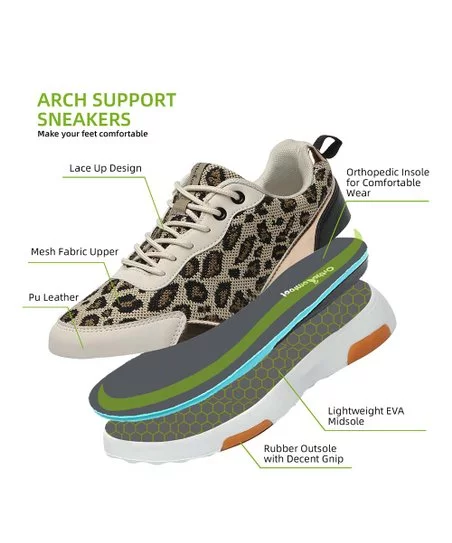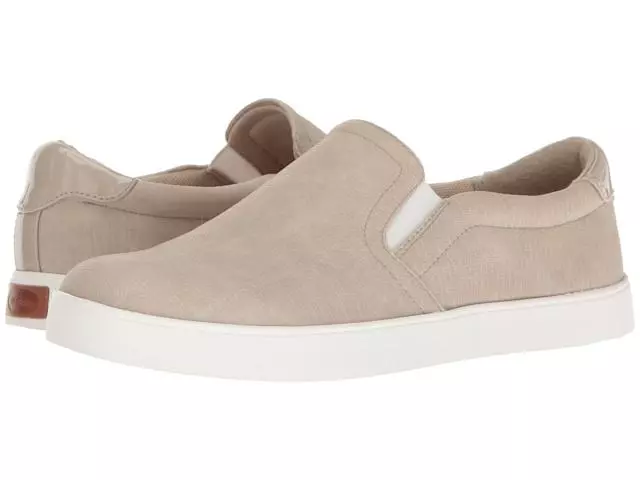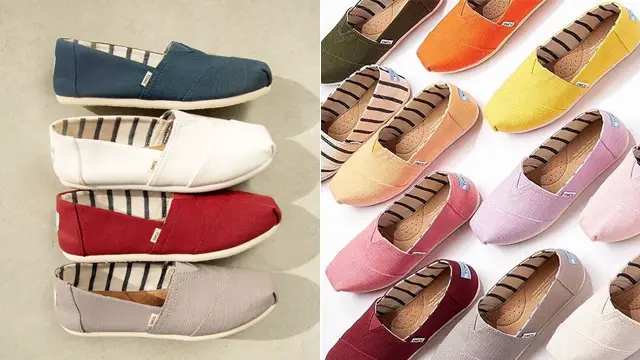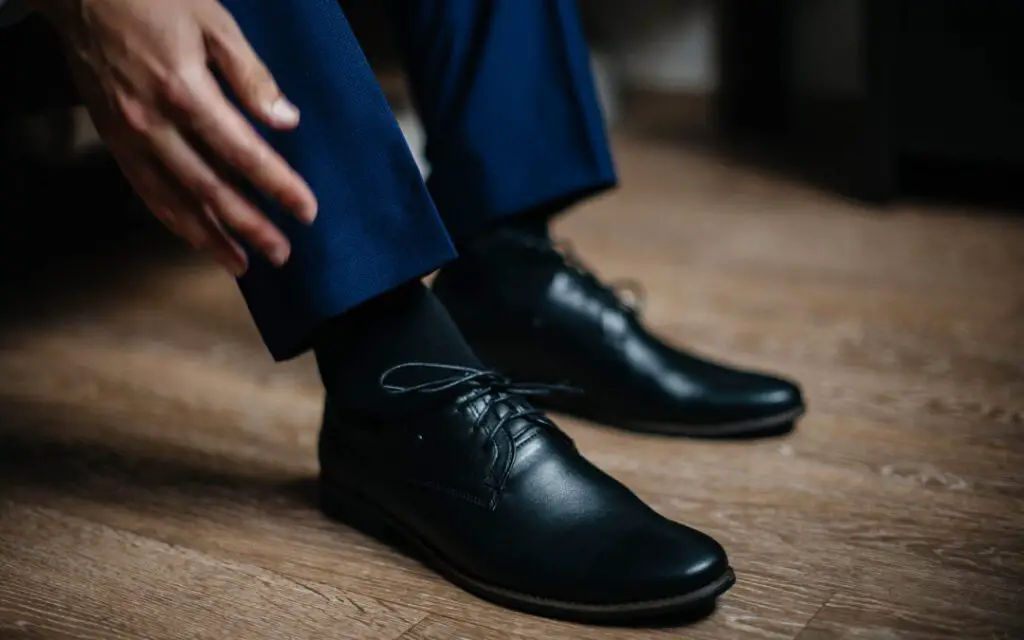
Plantar fasciitis is a common condition that causes heel pain.
The plantar fascia is the band of tissue that connects your heel bone to your toes. When this tissue becomes inflamed, it can cause heel pain.
One of the main risk factors for plantar fasciitis is wearing shoes that don’t support your feet properly.
In this blog post, we’ll discuss how shoes can cause plantar fasciitis and what you can do to prevent it.
Table of Contents
ToggleWhat is plantar fasciitis?
Plantar fasciitis is a condition that affects the connective tissue that runs along the bottom of your foot.
The main symptom is heel pain, and it can be aggravated by activities that put stress on your feet, like running or walking on hard surfaces.
Other risk factors include having high arches or flat feet, being overweight, and wearing shoes that don’t provide enough support.
If you’re experiencing heel pain, the best thing to do is to rest and ice the affected area. You can also try stretching exercises to loosen the tissue. If the pain doesn’t go away, see a doctor, who may recommend other treatments, like physical therapy or orthotics. Check out Mayo Clinic’s article about plantar fasciitis here for more information.
How shoes can cause plantar fasciitis
There are two main ways that shoes can contribute to plantar fasciitis: by not providing enough support and by not being comfortable.
Shoes that don’t provide enough support put extra stress on the plantar fascia, which can lead to inflammation.
Likewise, shoes that are uncomfortable can also lead to plantar fasciitis. This is because, when your feet are constantly uncomfortable, they will try to compensate by putting extra strain on the plantar fascia.
What are the worst shoes to wear for plantar fasciitis?
The worst shoes to wear with this condition are often:
· Shoes with little to no support
· Sandals and flip-flops
· High-heeled shoes
· Narrow-toed shoes
· Old, worn-out shoes
However, there are footwear in these categories that are safe for people with plantar fasciitis. Check out our article about the best flip-flops to wear with plantar fasciitis here.
Preventing plantar fasciitis with orthotics
The best way to prevent plantar fasciitis is to wear shoes that provide good support and are comfortable. This means finding shoes that have good arch support and cushioned soles.
Orthotic devices, such as shoes or inserts, can help relieve pain by providing support to the foot.
Orthotic shoes
Orthotic shoes are designed to provide support to the arch of the foot and improve alignment.
They may be prescribed by a doctor or podiatrist, or they can be purchased over the counter.
Orthotic shoes are often recommended for people with plantar fasciitis because they can help relieve pain and prevent further injury.
However, there are some potential drawbacks to orthotic shoes, such as:
· They can be expensive, especially if they need to be custom-made.
· They can be difficult to find in stores as not all retailers carry them.
· They may not be suitable for people with certain foot conditions, such as bunions or hammertoe.
· Some people find them uncomfortable to wear.
· They may need to be replaced more frequently than other types of orthotics because they are subject to more wear and tear.
Orthotic inserts
Orthotic inserts are devices that fit into regular shoes and provide support to the arch of the foot.
They can be purchased over the counter or prescribed by a doctor or podiatrist.
Orthotic inserts are often recommended for people with plantar fasciitis because they are less expensive than orthotic shoes and can be worn with any type of shoe.
However, there are some potential drawbacks to orthotic inserts, such as:
· They may not provide as much support as orthotic shoes.
· They may need to be replaced more frequently than orthotic shoes because they are subject to more wear and tear.
· Some people find them uncomfortable to wear.
The best way to determine what type of device is right for you is to speak with a doctor or podiatrist who can assess your individual needs and make a recommendation based on your specific condition.
Orthopedic technology recommendations
OrthoComfoot

OrthoComfoot offers a variety of stylish orthopedic shoes with high quality mesh fabric, breathable lining, and a non-slip sole. Just check out those gorgeous prints!
Orthofeet
Dr. Scholl's

As one of the leading innovators in orthopedic technology, Dr. Scholl’s offers some of the best orthotic inserts on the market. Their orthotics come with arch support, ShockGuard technology, and odor elimination.
Conclusion: orthotics matter!
Shoes play a big role in whether or not you develop plantar fasciitis. Wearing shoes that don’t provide enough support or are uncomfortable puts you at a higher risk for developing this condition.
To prevent plantar fasciitis, be sure to wear shoes that offer good arch support and cushioned soles.
If you’re not sure what kind of shoe to buy, consult with a podiatrist or a shoe specialist who can help you find the right type of shoe for your feet.
FAQs
How long does it take for plantar fasciitis to go away?
The plantar fascia is a band of tissue that runs along the bottom of your foot, from your heel to your toes. When this tissue becomes inflamed, it can be very painful.
In most cases, plantar fasciitis will improve with rest, ice, and over-the-counter pain relievers.
However, it can take several months for the inflammation to completely resolve.
For some people, plantar fasciitis may become a chronic condition that causes long-term pain.
What can I do to prevent getting plantar fasciitis?
There are several things you can do to prevent it from occurring.
First, make sure to wear shoes that provide good support for your feet.
Second, avoid high-impact activities such as running on hard surfaces.
Third, stretch your calf muscles and Achilles tendon regularly.
By taking these precautions, you can help to prevent plantar fasciitis and keep your feet healthy and pain-free.
What other problems can plantar fasciitis cause?
Plantar fasciitis can lead to other problems, such as heel spurs. Heel spurs are calcium deposits that form on the heel bone and can be quite painful.
In addition, plantar fasciitis can also cause Achilles tendonitis, an inflammation of the tendon that connects the heel to the calf muscle.
While plantar fasciitis is a relatively common condition, it is important to seek treatment if you are experiencing pain, as it can lead to other more serious problems.






